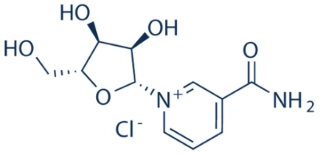Trademarking Italian place-names: 10 key Q&As and new rules for Milan | Hogan Lovells
Previous regulatory changes to protect the “Made in Italy” brand include the Decree Law 30 April 2019 No. 34 (and subsequent L. 26 June 2019 No. 58) and the Law 27 December 2023 No. 206. The following ten Q&As guide you through the current state of play, focusing on Milan:
1. What is the legal background? And which are the main recent changes?
The Decree Law 30 April 2019 No. 34 (“Decree Law”) adopted a series of provisions to counter the phenomenon of the so-called “Italian sounding” marketing i.e. using Italian names, images, and trademarks to market and promote non-Italian products. These include, for example, a prohibition on registering words, logos or signs detrimental to Italy’s image and reputation (see article 10 of the Intellectual Property Code as amended by the mentioned Decree Law).
Law 27 December 2023 No. 206 (“Law”) specifically dealt with trademark registration. Among other provisions and in line with the purpose of enhancing and protecting the Italian cultural heritage, it provides for the possibility for institutes and places of culture to register their characterizing trademarks.
2. What are the rules for trademarks including Italian place names?
The new wording of article 10 of the Intellectual Property Code does not permit registration of any trademarks consisting, among other elements, of names of Italian place names – unless the entity itself authorizes the registration of the trademark.
3. How are territorial public entities acting? Specifically the Municipality of Milan.
On 31 May 2024 the Municipality of Milan was the first to publish a new “Regulation for the release of authorization to register trademarks including ‘Milano’ sign” and implementation documents (“Regulation”) pursuant to the Decree Law. The Regulation was approved with Municipality of Milan Council Resolution No. 29 of 23 April 2024. Likely, other cities will follow.
4. What is the scope of this Regulation?
The Regulation establishes conditions and procedures for obtaining authorization to register trademarks featuring “Milano”, in any form or combination. Authorization is granted if the trademark does not harm but instead promotes and enhances the image of the city, its territory, and the Milanese community. If obtained, it is non-transferable.
5. What about costs? And how long is the Milan authorization valid?
No fees or reimbursements are required for authorization, but taxes, duties, and future fees may apply.
Authorization lasts ten years from the application date, with renewal options. If not renewed, the use of “Milano” must cease. It could be revoked in certain cases.
6. Which are the main conditions for granting the Milan authorization?
Applicants must adhere to several conditions, such as, for example, non-transferability of the authorization and exclusive use within the specified scope for which authorization was granted. They must also cease use upon expiration and indemnify the Municipality of Milan against third-party claims.
7. Which entity processes the authorization requests in Milan?
The Municipality of Milan handles requests after being notified by the Italian Patent and Trademark Office or the Chambers of Commerce, which are the deputed entities for receiving trademark applications.
8. Can the “Milano” sign be registered in connection to any and all products and services?
No, some products and services are excluded such as pornographic material and weapons.
9. Who can apply to register trademarks that include the “Milano” sign?
Eligible applicants include individuals, public administrations, various organizations (profit and non-profit), educational institutions, and economic operators with a stable organization in Italy and an honourable reputation (e.g. no serious criminal convictions).
10. Is the mere use of the “Milano” sign subject to the Regulation?
Mere use is not regulated, but the Municipality reserves the right to take legal action against unauthorized “use of the name Milano”. This may be clarified further in the coming months. In particular, the reference to the use of “a name” seems to broaden the scope of the Regulation, including also the use of the sign “Milano”.






